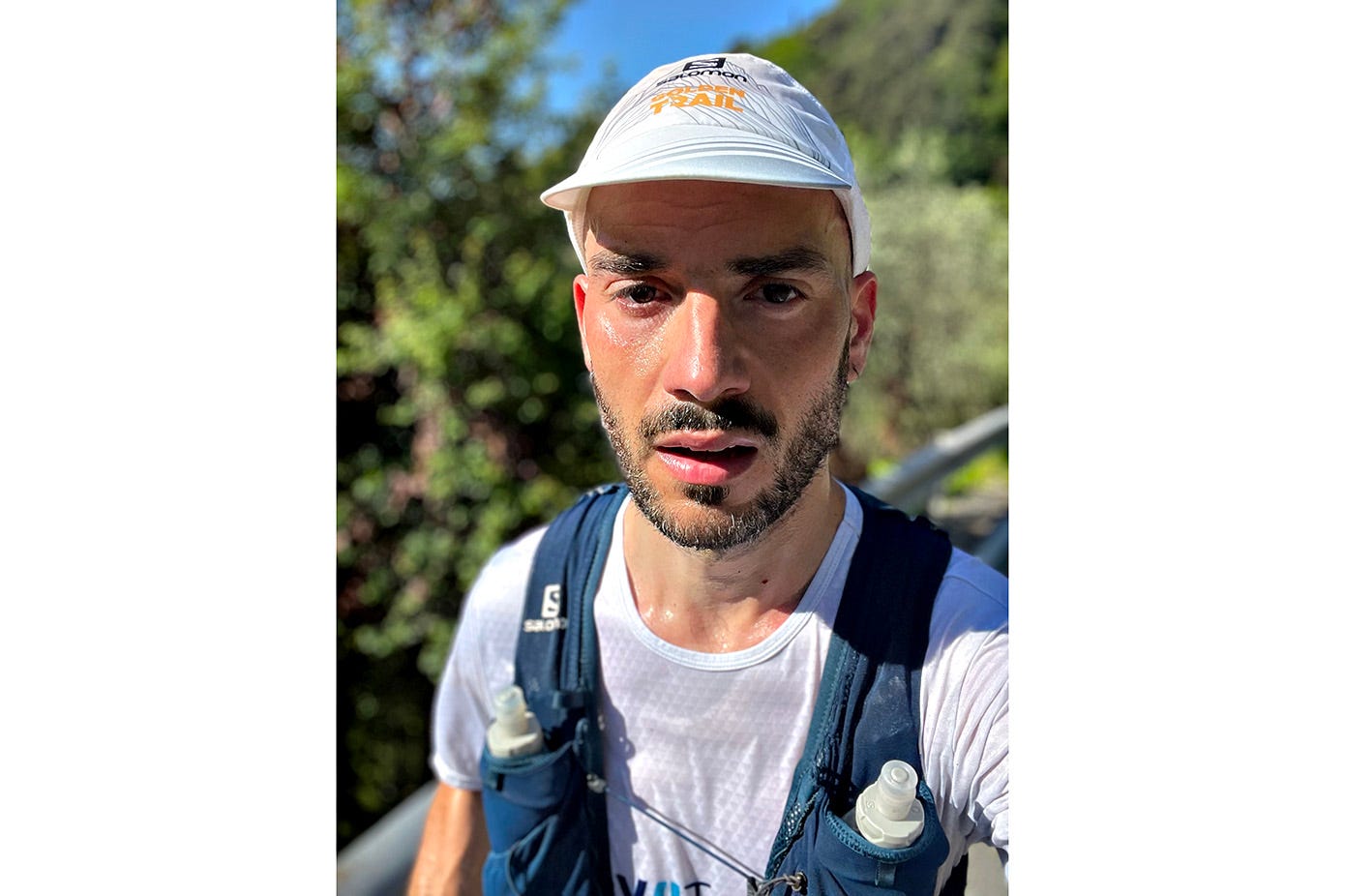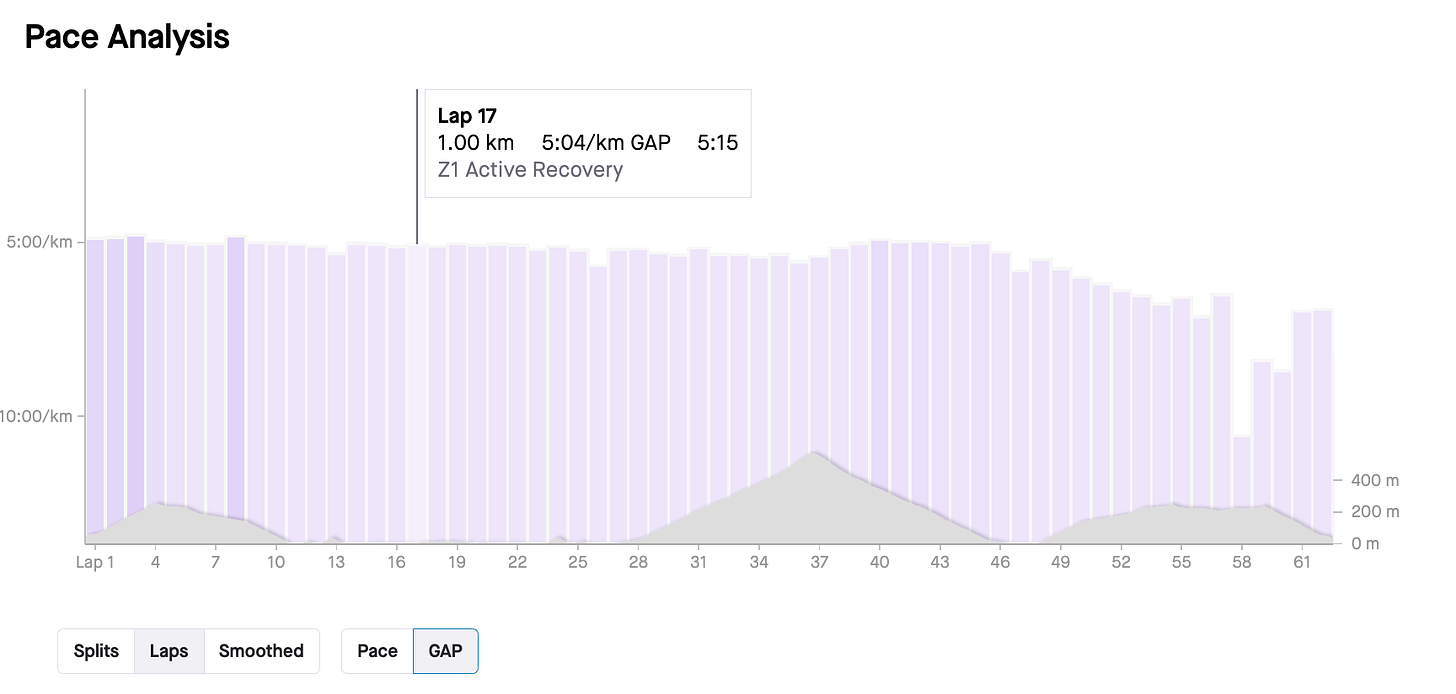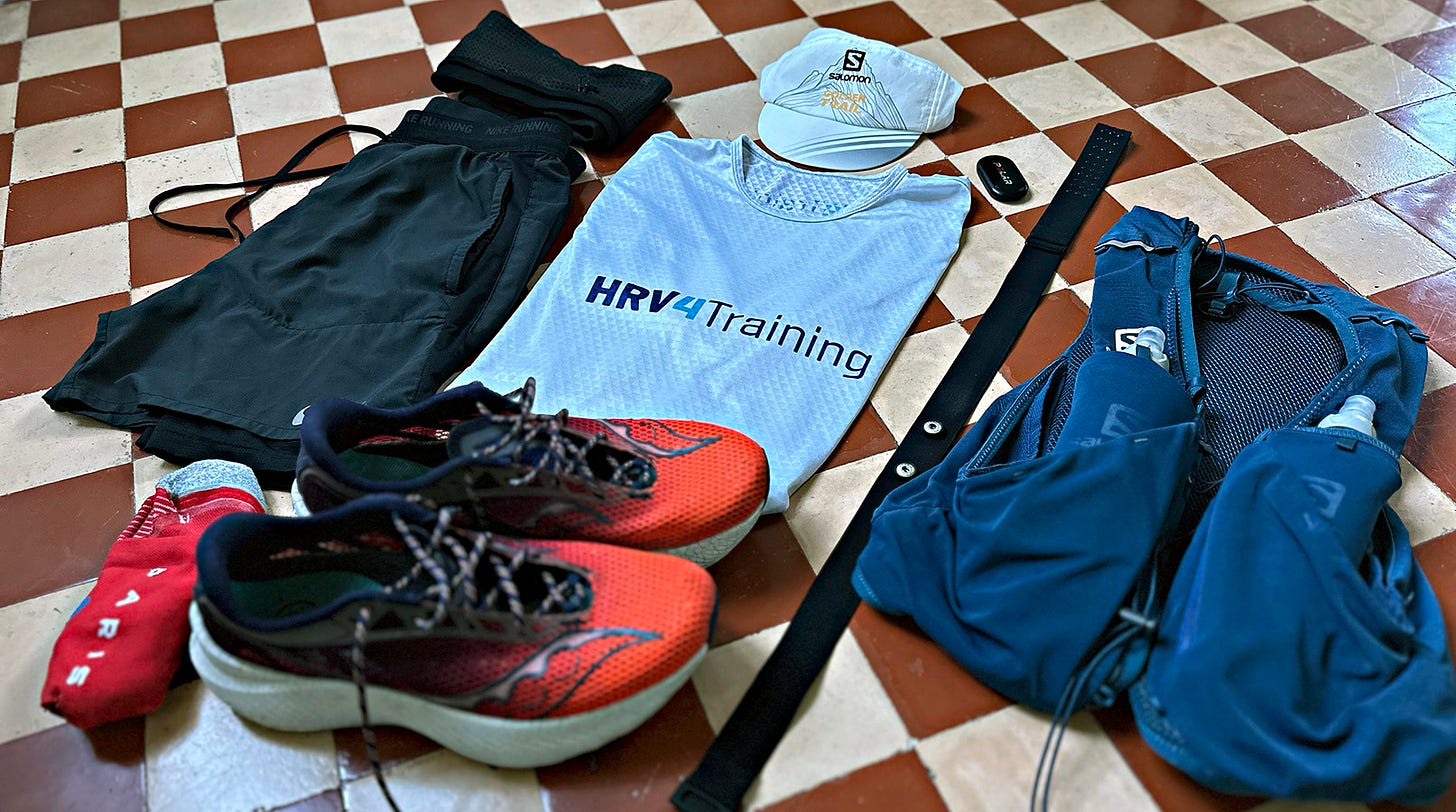Writing this one while the experience is still fresh, so I don’t forget what I learned today on a rough 6-hour run in preparation for the 100 km del Passatore.
See also:
How did it go?
I had a fantastic day for about 4 hours and 10 minutes or 46 km, then it was complete darkness. Cramping, nausea, zero energies, lots of pain. I barely made it to 6 hours.
I started at an easy effort in terms of perceived exertion and heart rate, but still sustained, as one of the goals was to see if I could race the distance (spoiler: I can’t!). After the first hills, I had a flatter road, before starting the long, 10-kilometer climb, which is very similar to Passo della Colla in Passatore. I felt strong during the climb, proceeding as planned in terms of fueling and hydration, and then running well on the descent as well. At that point, without even realizing it, I was done. I had to walk plenty, stretch some cramps (while getting some more), and couldn’t eat for a while.
Overall it was a negative day as I am supposed to run twice the distance, but I am glad I tried the harder pace as I have it now very clear in my mind that I cannot race this distance. My limiters (poor efficiency, cramping) play a bigger and bigger role with the longer distance, and I need to play it ultra-safe (see what I did there?).
Maybe in a few years, with consistent running and some other improvements in my running economy, it will be a bit better.
Here is the grade-adjusted pace for today’s race simulation:
and here is the actual pace:
You can find the activity and splits on Strava, here.
Below are a few things that I will change for the race. I do not think I will have the opportunity to try this again, but it depends a bit on how quickly I come back from today’s run. In case I do come back quickly, I might give it another shot 10 days from now, and 2 weeks prior to the race. At this point, figuring out these “details” seems more important than any other workout I could be doing.
Annotating my weight as well: I was 67.5 kg naked in the morning, 71.5 with clothes and hydration pack (water+food), and 65.5 kg naked after running 6 hours. I ate 6 gels, 3 Clif bars, 2 pieces of focaccia (when I was done at the end), and drank 4.5 liters of water (not entirely sure about this).
#1 Pacing / Intensity
It’s too soon for me to race this distance.
Today I was running at about 5’15”/km (actual pace), until the big climb, and it felt easy (just coming from a sub-3 marathon), but it was clearly too much already for my muscles. I know I do not cramp this badly when I go out for easier training runs, so today I overdid it with the intensity.
This is the most important learning of the day: this is not a distance for me to race. It is a distance for me to jog. I must say I am not ready to give up on sub-10 hours yet (assuming it’s not too hot), but that’s already quite a bit slower than I was running today.
In practical terms, I think it would be good to never let my heart rate go higher than about 135 bpm. Today I was often near 145 (at least when the strap was working, so much trouble recently to get a decent signal). I will try to stick to this plan and see what comes up in terms of pace.
#2 Fueling / Heat
I was hoping to have sorted this out, but today I had a lot of nausea and stopped eating after 42 km, then tried to force myself to have a gel at about 50 km, and eventually could eat something only after walking 10 minutes at about 58 km. It seemed to be all good before, alternating gels and Clif bars, despite not really feeling like Clif bars today. I think the warm day amplified these issues, just like last year during the race.
Despite all the recommendations to eat more, my take here is to eat less. I do not think that being nauseous all the time and then not being able to eat at all for hours is going to help me in any way, so I will change my eating plan and have half a Clif bar instead of an entire one (or a similar food), and alternate them to the gels.
An alternative would be to have gels only, I need to think about this, I’m afraid I can’t handle that either in terms of taste, or on a hot day.
I hope that with fewer calories or no solid food I will be able to eat all the time though, as I do on easier or less warm runs.
#3 Breaks
Today I didn’t take any breaks apart from two quick ones to fill my water bottles at about 25 and 47 km. This was part of my attempt to race the distance, which clearly failed.
I think it would be wise to add some walking breaks, so I will now do the following: when I eat solid food (i.e. every 12 km, since I alternate 1 gel and 1 solid food every 6 km), I will walk for the time it takes me to eat it. Alternatively if it is hot I could walk every 6 km even when eating gels.
It won’t be much, but maybe the break from the continuous running will do my muscles some good.
#4 Kit
The last thing I will change is the shoes. I had the Saucony Endorphines Pro 3, which I had used for the marathon, and had already tried for long slow runs in Holland. However, when doing lots of climbing, I felt discomfort, a bit of a weird stride going up, and hitting the shoe with my toes when going down. I will use more comfortable shoes (oddly enough, the most comfortable I have are trail shoes, Hoka’s Torrents, and I might end up running with them or Rincons if I can get a pair). Everything else was good and tested many times: socks, t-shirt, shorts, hat, and hydration pack.
That’s all. In short, an overambitious attempt that brings me back to reality.
Three weeks to race day.
Marco holds a PhD cum laude in applied machine learning, a M.Sc. cum laude in computer science engineering, and a M.Sc. cum laude in human movement sciences and high-performance coaching.
He has published more than 50 papers and patents at the intersection between physiology, health, technology, and human performance.
He is co-founder of HRV4Training, advisor at Oura, guest lecturer at VU Amsterdam, and editor for IEEE Pervasive Computing Magazine. He loves running.
Twitter: @altini_marco










Have you tried fully liquid nutrition?
I would not have an athlete with your profile race with solids or gels.
The uphill start for the ultra... Do you have a strategy for dropping HR down so the body continues to process liquid calories?
I used to have similar issues with the bars/gels combo during ultras. Using more liquid calories helped quite a lot. It's maybe worth trying it (either something like Maurten 320 powder or, recently, I started mixing my own with pure maltodextrin, fructose, and electrolytes mix). Anyway, good luck with the race, Marco!